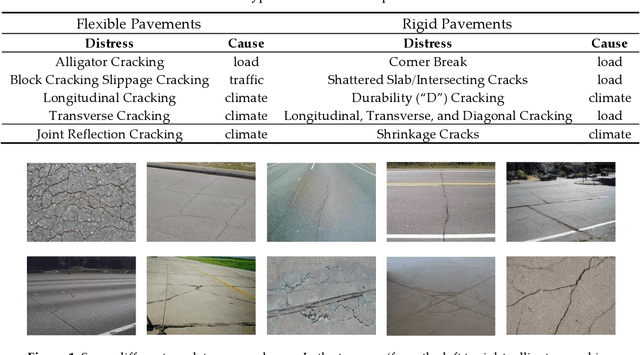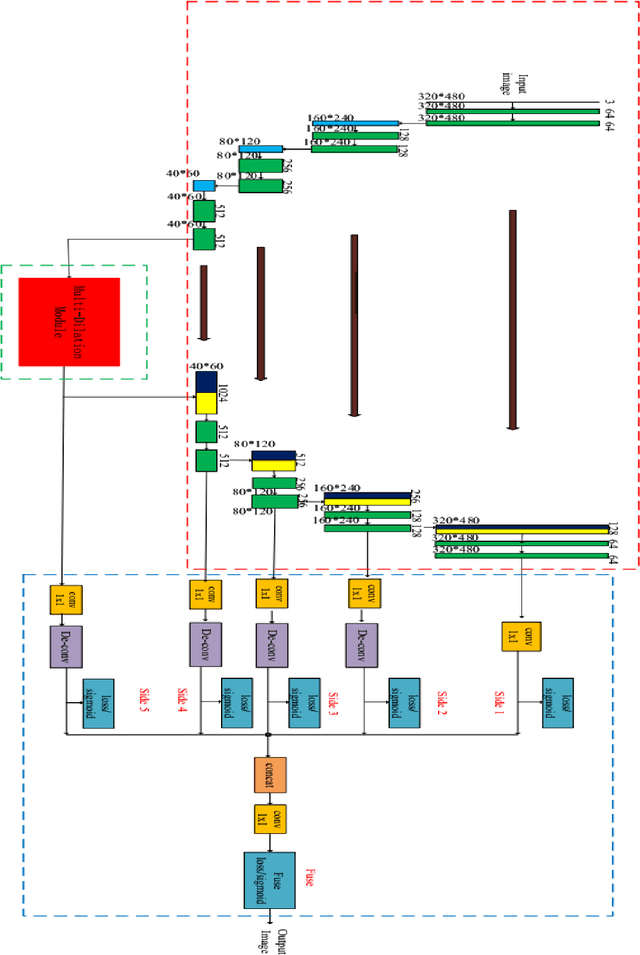Xiaopeng Chen
Automatic Crack Detection on Road Pavements Using Encoder Decoder Architecture
Jul 01, 2020



Abstract:Inspired by the development of deep learning in computer vision and object detection, the proposed algorithm considers an encoder-decoder architecture with hierarchical feature learning and dilated convolution, named U-Hierarchical Dilated Network (U-HDN), to perform crack detection in an end-to-end method. Crack characteristics with multiple context information are automatically able to learn and perform end-to-end crack detection. Then, a multi-dilation module embedded in an encoder-decoder architecture is proposed. The crack features of multiple context sizes can be integrated into the multi-dilation module by dilation convolution with different dilatation rates, which can obtain much more cracks information. Finally, the hierarchical feature learning module is designed to obtain a multi-scale features from the high to low-level convolutional layers, which are integrated to predict pixel-wise crack detection. Some experiments on public crack databases using 118 images were performed and the results were compared with those obtained with other methods on the same images. The results show that the proposed U-HDN method achieves high performance because it can extract and fuse different context sizes and different levels of feature maps than other algorithms.
Ensemble of Deep Convolutional Neural Networks for Automatic Pavement Crack Detection and Measurement
Feb 08, 2020



Abstract:Automated pavement crack detection and measurement are important road issues. Agencies have to guarantee the improvement of road safety. Conventional crack detection and measurement algorithms can be extremely time-consuming and low efficiency. Therefore, recently, innovative algorithms have received increased attention from researchers. In this paper, we propose an ensemble of convolutional neural networks (without a pooling layer) based on probability fusion for automated pavement crack detection and measurement. Specifically, an ensemble of convolutional neural networks was employed to identify the structure of small cracks with raw images. Secondly, outputs of the individual convolutional neural network model for the ensemble were averaged to produce the final crack probability value of each pixel, which can obtain a predicted probability map. Finally, the predicted morphological features of the cracks were measured by using the skeleton extraction algorithm. To validate the proposed method, some experiments were performed on two public crack databases (CFD and AigleRN) and the results of the different state-of-the-art methods were compared. The experimental results show that the proposed method outperforms the other methods. For crack measurement, the crack length and width can be measure based on different crack types (complex, common, thin, and intersecting cracks.). The results show that the proposed algorithm can be effectively applied for crack measurement.
 Add to Chrome
Add to Chrome Add to Firefox
Add to Firefox Add to Edge
Add to Edge